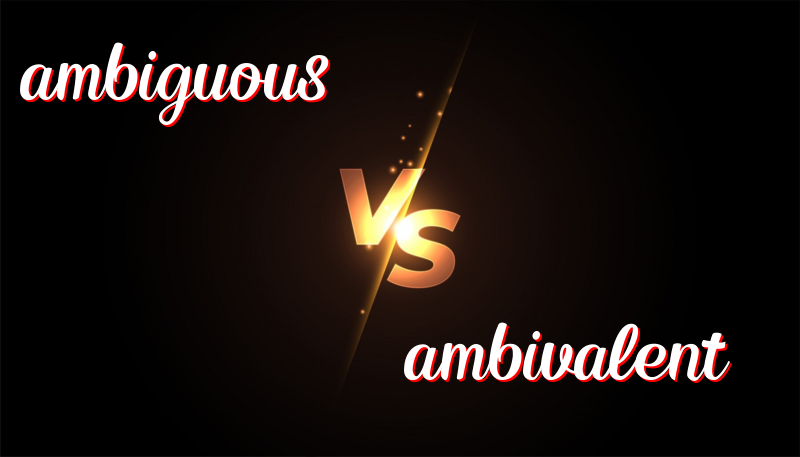The Difference Between Ambiguous and Ambivalent
August 28, 2024
Understanding the Words “Ambiguous” and “Ambivalent”
Learning the difference between “ambiguous” and “ambivalent” can be tricky, but we will make it simple.
History of the Words
The word “ambiguous” comes from Latin and has been used for a long time. It means something that can have more than one meaning.
The word “ambivalent” also comes from Latin, but it is newer. It means having mixed feelings about something.
How to Use “Ambiguous”
- His answer was ambiguous and hard to understand.
- The sign is ambiguous; it could mean two things.
- The poem has an ambiguous ending.
- The teacher’s instructions were ambiguous.
- The word “bank” is ambiguous; it can mean the side of a river or a place to keep money.
How to Use “Ambivalent”
- She felt ambivalent about going to the party.
- He is ambivalent about his new job.
- I have ambivalent feelings about moving to a new city.
- My friend is ambivalent about which movie to watch.
- They were ambivalent about selling their house.
Trick to Remember the Difference
Here is a simple trick to remember:
- Ambiguous – Think of “many meanings.”
- Ambivalent – Think of “both feelings.”
Summary
To put it simply:
- “Ambiguous” means something is unclear or can have more than one meaning.
- “Ambivalent” means having mixed or unsure feelings about something.
Remember, ambiguous is about meaning, and ambivalent is about feelings.

Leave a Reply
You must be logged in to post a comment.